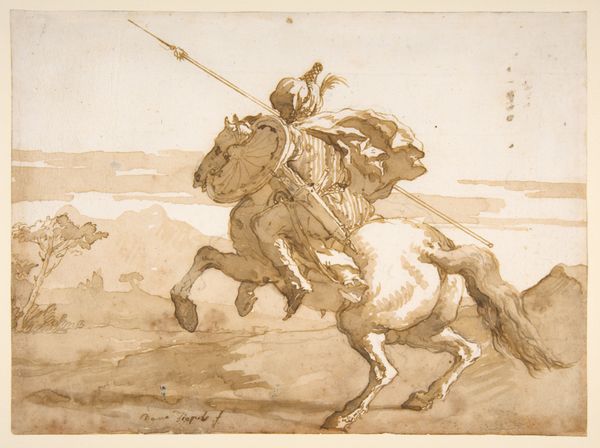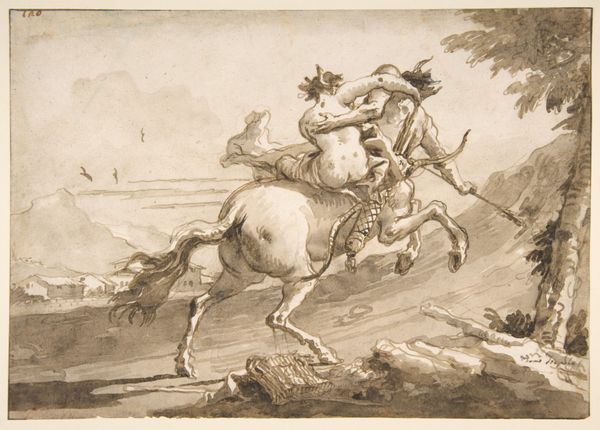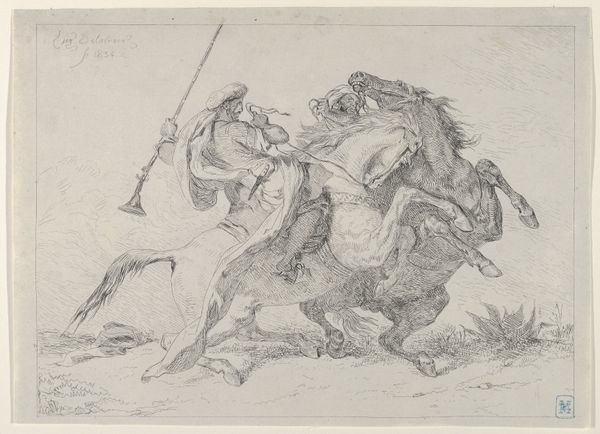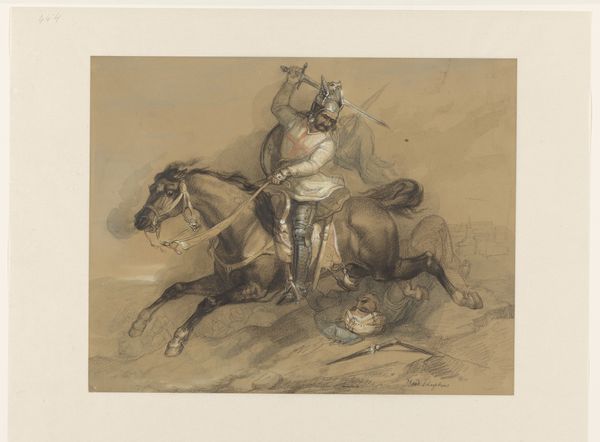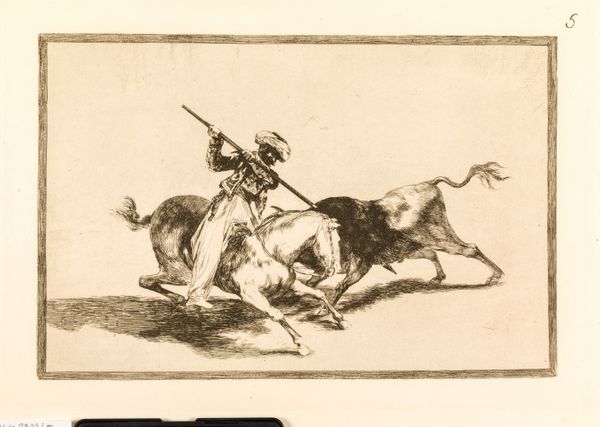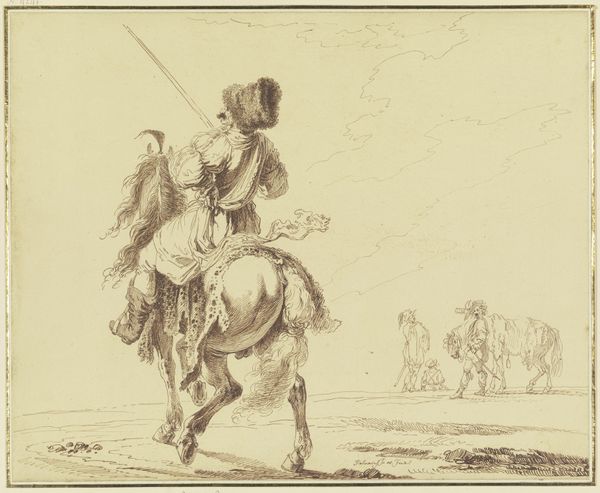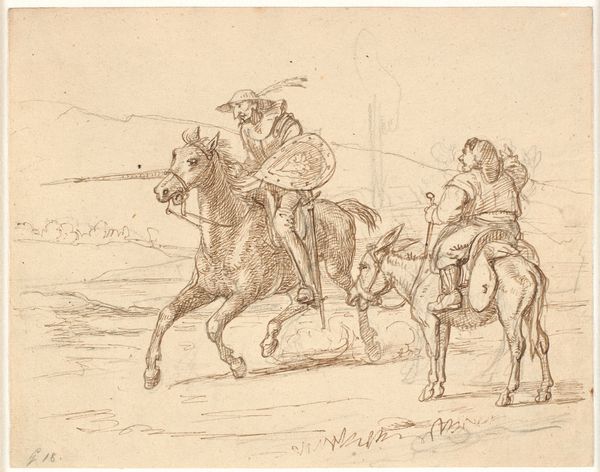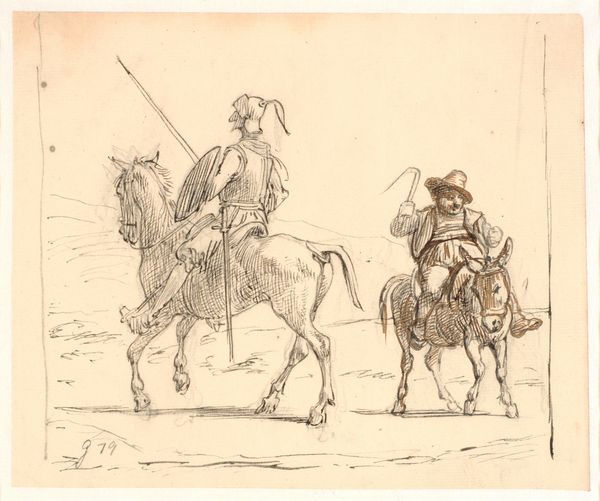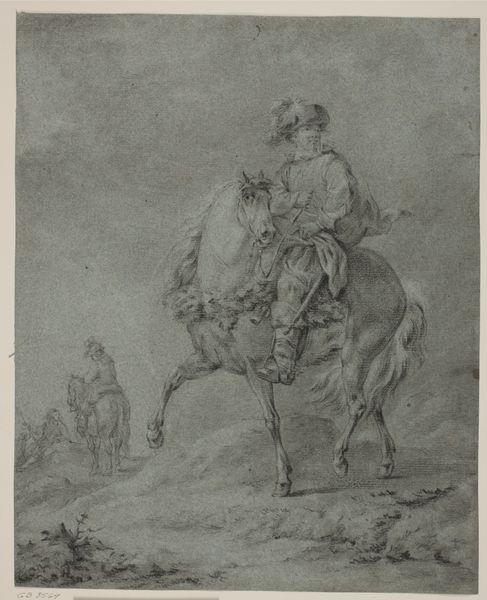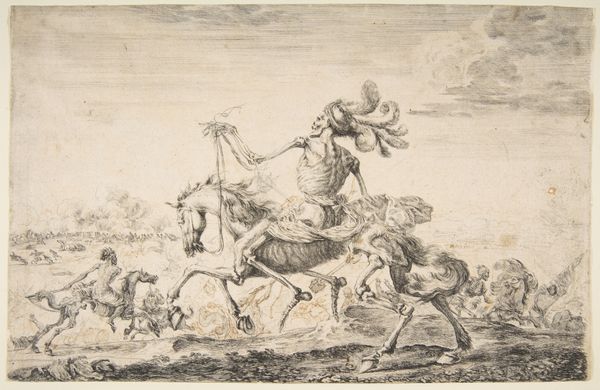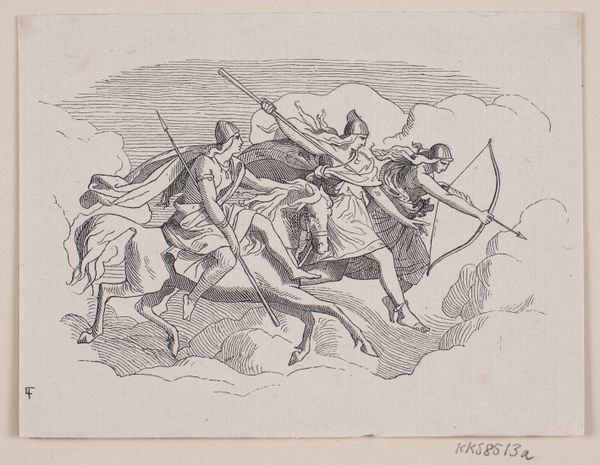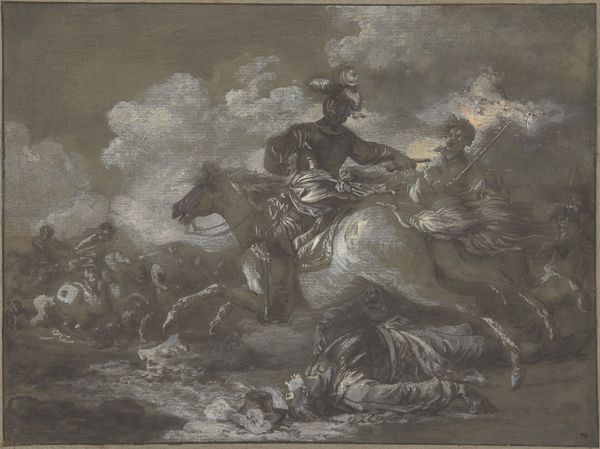
drawing, gouache, paper, ink
#
drawing
#
narrative-art
#
gouache
#
landscape
#
figuration
#
paper
#
form
#
oil painting
#
ink
#
classicism
#
line
#
history-painting
Copyright: Public Domain
Curator: Here we have a drawing at the Städel Museum entitled "Ein Kürassier nach links springend," or "A Cuirassier Leaping to the Left," by Jean-Baptiste Robin, executed in ink, gouache, and pencil on paper. What strikes you most about this work? Editor: The dynamism is immediate! The rearing horse, the rider with his sword raised... it conveys an almost frenzied energy. The muted colors amplify the dramatic urgency. Curator: It’s certainly an image full of implied movement. Robin was known for his military scenes, and it's interesting to see how the role of military imagery shaped perceptions of power and national identity. Editor: Absolutely. The cuirassier, even isolated in this drawing, becomes an archetype of martial prowess. Notice the landscape – more suggested than defined – and how the charging horse dominates the scene, conveying power through size and action. The detail in his attire creates this image of strength. What is interesting is that he’s charging into an undefinable battle. Curator: Precisely. That absence of a clear opponent is key. This isn't about a specific battle; it’s about the idealised image of the soldier and how this kind of glorification can impact social attitudes towards conflict. I also notice a sort of Romantic classicism, in its approach, although the strokes suggest less of an event and more of an abstract moment, with the landscape simply a vehicle for showcasing such a scene. Editor: Yes, the symbolic weight here seems intentionally amplified, detaching the soldier from a concrete historical event and transforming him into something more like an enduring symbol. He exists more as a personification of a warrior ethos. Even his weapon held so high seems less immediately lethal, and more evocative of command and dominion. Curator: It's a powerful commentary on the visual strategies used to construct heroic narratives around war, wouldn't you agree? It forces us to consider the implications of such romanticized imagery. Editor: I’m leaving with an almost unsettling feeling. This wasn't simply documentation but also, possibly, an investment in that imagery, which certainly gives a new depth to how such scenes should be considered.
Comments
No comments
Be the first to comment and join the conversation on the ultimate creative platform.
